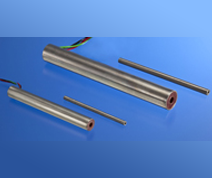Understanding Key Terminology for Sourcing LVDTs
Written by transtek_admin on 02/15/2022

Ever notice that every manufacturing field seems to have its very own language? It often includes words and phrases that are unique to their industry. Or, worse yet, common phrases that have entirely different definitions within their world. It’s a reality we can not change. In fact, the sensor industry is guilty of it! Though, when it comes to procurement, having a good understanding of the applicable terms will go a long way. Above all, it will help ensure that you are ordering exactly what the job calls for. Today, we’ll take a look at senor terminology.
Let’s start with the big one: resolution. In essence, this represents the smallest movement that can be measured. This is relevant for all type of sensors, not just LVTDs. But there’s more to it. For instance, with infinite resolution – you get all of the data you need, and more. You might not be able to see it all, but it’s being recorded. When we speak to customers and prospects, they often will say, “Give me the most resolution I can get.” But the real question they should be asking is, “How much resolution do I need?” This can be determined by understanding what they are doing with the sensor. In other words, what exactly are they measuring?
Another important attribute is the range of measurement – the lowest and highest data points that the senor is capable of capturing, and the high and low points of the application itself. You must be certain that the sensor is able to accurately measure at both ends of the required spectrum.
Next up is repeatability. This one is straightforward: how likely is it that you can go to the same point and get the same number every time?
Non-linearity is another important one. This refers to how straight a line is in the data. Since LVDTs offer infinite resolution, this word gets a lot of attention. Though the subject doesn’t really come up until someone’s looking at data. The output should be on a perfectly straight line and never deviate, but that’s not the reality. Therefore, you need to precisely measure the deviation.
Frequency response – refers to how fast you get the measurement. This will vary across different applications.
When sourcing sensors, you have to start by fully understanding what you’re looking to achieve. This includes knowing exactly what you’re trying to measure: speed, accuracy, and the data ranges. To do this successfully, you should have a solid understanding of the relevant terminology. This will help make sure that you get accurately specified components and avoid the headaches of over- or under-specifying. This, in turn, helps assure the finished product’s quality, performance, and longevity, (and possibly your job security as well).
